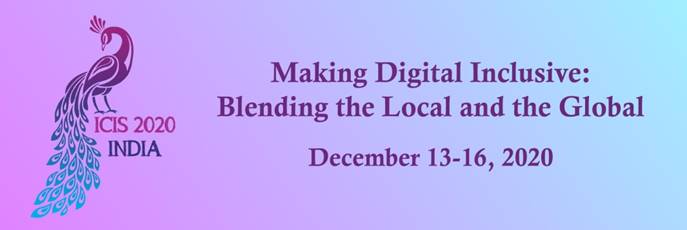IS Development and Project Management
Paper Type
Short
Paper Number
1206
Description
Banks are increasingly attempting to scale agility to speed-up innovation of digital applications. One major aspect of this challenge is the modernization of legacy information systems (IS), which still uphold core business operations accountable for profit generation. As a result, banks are struggling to apply a successful mechanism to address the required transition to a more agile organization at scale (“scaling agility”). This short paper builds on procedures of the general inductive approach, which we used to analyse data gathered from seven preliminary interviews with professionals in the banking industry concerned with scaling agility. In this context, we currently offer two main contributions. First, we describe strategies to either retain or replace legacy IS. Second, we present important non-technical barriers to legacy IS modernization. Additionally, this short paper presents a two-staged research design comprising a completed first stage and an on-going second stage, which is intended to conclude this study.
Recommended Citation
Limaj, Everist; Bernroider, Edward; and Ivanova, Maria, "Facing Legacy Information System Modernization in Scaling Agility in the Banking Industry: Preliminary Insights on Strategies and Non-technical Barriers" (2020). ICIS 2020 Proceedings. 1.
https://aisel.aisnet.org/icis2020/is_development/is_development/1
Facing Legacy Information System Modernization in Scaling Agility in the Banking Industry: Preliminary Insights on Strategies and Non-technical Barriers
Banks are increasingly attempting to scale agility to speed-up innovation of digital applications. One major aspect of this challenge is the modernization of legacy information systems (IS), which still uphold core business operations accountable for profit generation. As a result, banks are struggling to apply a successful mechanism to address the required transition to a more agile organization at scale (“scaling agility”). This short paper builds on procedures of the general inductive approach, which we used to analyse data gathered from seven preliminary interviews with professionals in the banking industry concerned with scaling agility. In this context, we currently offer two main contributions. First, we describe strategies to either retain or replace legacy IS. Second, we present important non-technical barriers to legacy IS modernization. Additionally, this short paper presents a two-staged research design comprising a completed first stage and an on-going second stage, which is intended to conclude this study.
When commenting on articles, please be friendly, welcoming, respectful and abide by the AIS eLibrary Discussion Thread Code of Conduct posted here.



Comments
17-PM